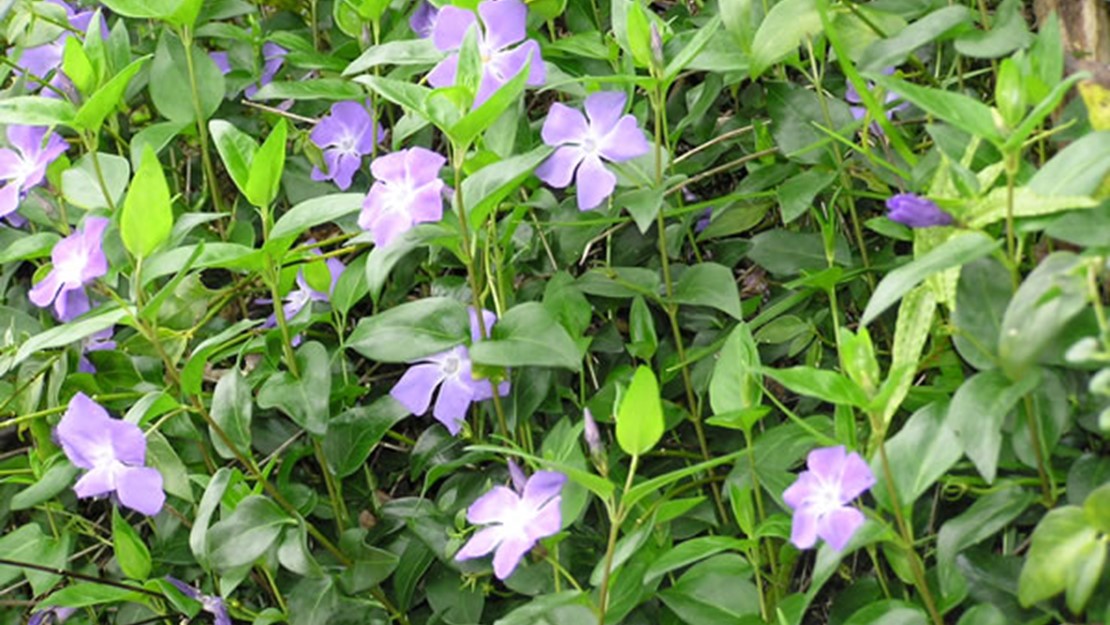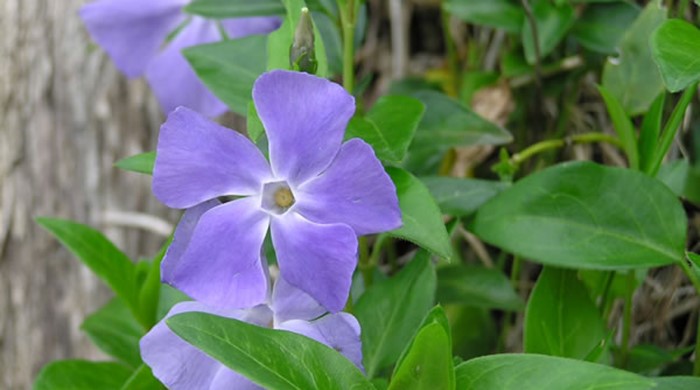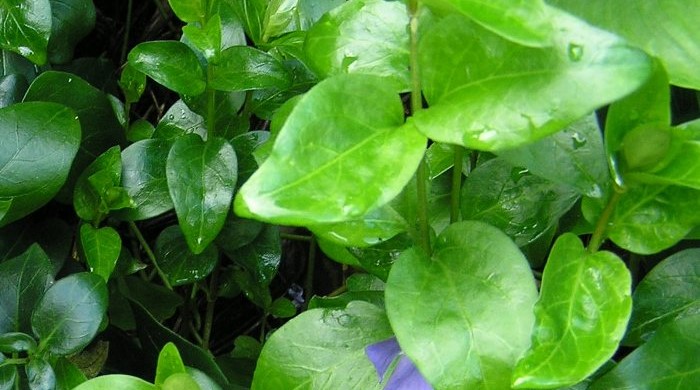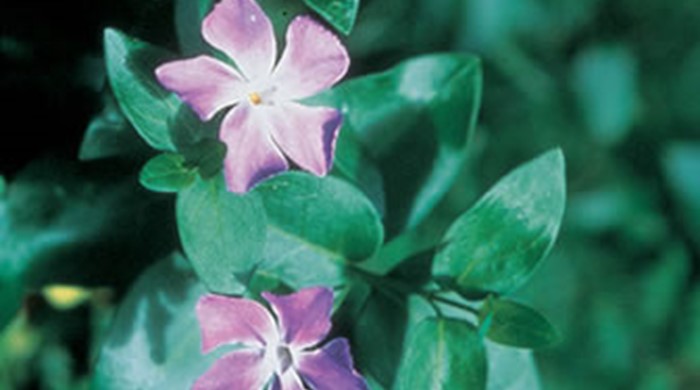Vinca major
Periwinkle
Also known as:
Bigleaf periwinkle, large periwinkle, greater periwinkle, blue periwinkle
Family: Apocynaceae
Origin: Mediterranean

Regional Pest Management Plan (RPMP) status
- Whole region — Sustained control
- Hauraki Gulf Controlled Area Notice pest
General description
Scrambling, rhizomatous perennial groundcover/vine. Stems are trailing, layering, < 2 m long and contain milky latex. Leaves are < 10 x 7 cm. Flowers are solitary, blue/violet and < 5 cm in diameter.
What you need to know
To help protect our environment:
- you must not breed, distribute, release or sell periwinkle within the Auckland region
- you must not plant periwinkle within the Auckland region, unless you are transferring an existing plant on your land to another location within the boundaries of the same property
- you must destroy any periwinkle on land that you occupy if it has been planted in breach of the above rules and you are directed to do so by an authorised person.
Auckland Council will manage periwinkle in buffer areas of parks, where periwinkle is being managed, to an extent that protects the values of that parkland. If you wish to help protect your local parkland, you are encouraged to control or remove any periwinkle on your land and plant a better alternative instead.
View a map of park buffers.
To find out more about how we’re protecting Auckland’s parkland from pest plants, visit our pest plant buffer pages.
Habitats
Riparian margins, alluvial flats, disturbed forest and scrubland, coastal areas, bare and rocky habitat, wasteland, roadsides.
Dispersal
Seed rarely set. Vegetative spread from stem layering and rhizomes, dispersed by water and soil movement. Human-mediated dispersal through dumping of garden waste and movement of contaminated soil and machinery.
Impact on environment
Smothers ground vegetation, preventing native seedling regeneration. Alters erosion and flow regimes of streams. Vector for Pierce’s disease in grapes.
Control
Site management
Follow up treated areas 3 times per year. Encourage natural regeneration of native plants or replant treated areas where possible after 2-3 treatments to establish dense ground cover and minimise reinvasion.
Recommended approaches
Physical control
Method: Dig out.
Plant parts requiring disposal: All parts.
Disposal options: Remove to greenwaste or landfill.
Biocontrol
Biocontrol is currently not available for this species.
Community agrichemical control recommendations
Certified Handler/Experienced agrichemical user: Foliar spray with 200ml glyphosate green and 1g metsulfuron-methyl per 10L and 20ml penetrant.
Caution: When using any herbicide or pesticide please read the label thoroughly to ensure that all instructions and safety requirements are followed.






